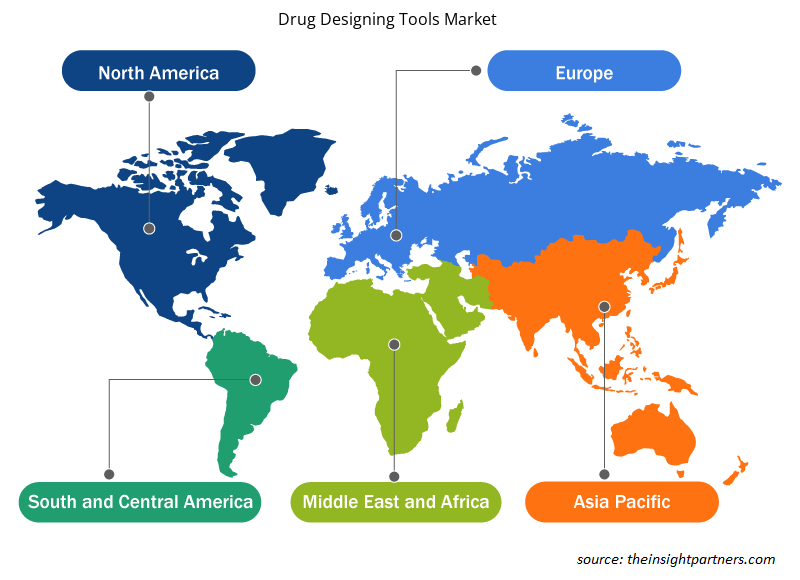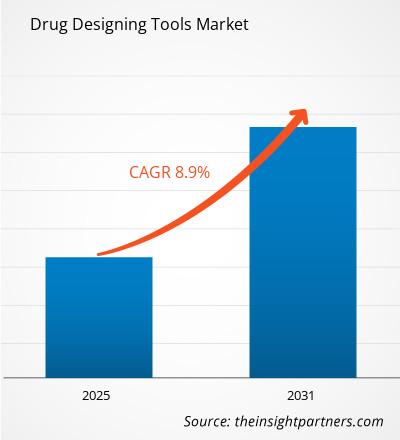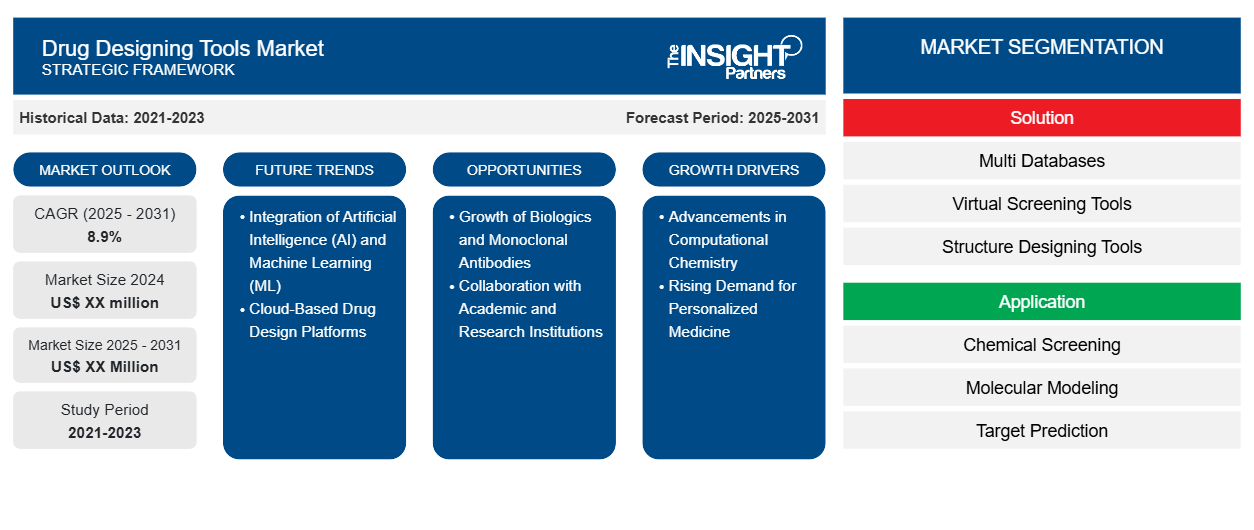药物设计工具市场预计在 2023 年至 2031 年期间的复合年增长率为 8.9%,市场规模将从 2023 年的 XX 百万美元扩大到 2031 年的 XX 百万美元。
报告按解决方案(多数据库、虚拟筛选工具、结构设计工具、预测分析、模型构建工具等)细分;应用(化学筛选、分子建模、靶标预测、结合位点预测、对接、能量最小化等);最终用户(制药公司、生物技术公司、学术和研究机构、合同研究组织等)。全球分析进一步细分为区域和主要国家。报告以美元为单位提供了上述分析和细分的价值
报告目的
Insight Partners 发布的《药物设计工具市场》报告旨在描述当前形势和未来增长、主要驱动因素、挑战和机遇。这将为各种业务利益相关者提供见解,例如:
- 技术提供商/制造商:了解不断变化的市场动态并了解潜在的增长机会,从而能够做出明智的战略决策。
- 投资者:对市场增长率、市场财务预测以及整个价值链中存在的机会进行全面的趋势分析。
- 监管机构:监管市场政策和警察活动,旨在最大限度地减少滥用行为,维护投资者的信任和信心,维护市场的完整性和稳定性。
药物设计工具市场细分
解决方案
- 多数据库
- 虚拟筛选工具
- 结构设计工具
- 预测分析
- 模型构建工具
- 其他的
应用
- 化学筛选
- 分子建模
- 目标预测
- 结合位点预测
- 对接
- 能量最小化
- 其他的
终端用户
- 制药公司
- 生物科技公司
- 学术及研究机构
- 合同研究组织
- 其他的
地理
- 北美
- 欧洲
- 亚太
- 南美洲和中美洲
- 中东和非洲
地理
- 北美
- 欧洲
- 亚太
- 南美洲和中美洲
- 中东和非洲
定制此报告以满足您的需求
您可以免费定制任何报告,包括本报告的部分内容、国家级分析、Excel 数据包,以及为初创企业和大学提供优惠和折扣
- 获取此报告的关键市场趋势。这个免费样品将包括数据分析,从市场趋势到估计和预测。
药物设计工具市场增长动力
- 计算化学的进步:计算化学的快速进步推动了药物设计工具市场的增长。分子建模、对接模拟和虚拟筛选等现代计算技术使研究人员能够预测分子的行为并在合成之前优化候选药物。这些工具简化了药物发现过程,降低了成本,提高了识别潜在疗法的效率,促进了药物设计软件的广泛采用。
- 个性化医疗需求不断增长:随着个性化医疗的普及,对能够根据个人基因特征定制治疗方案的药物设计工具的需求也日益增长。计算药物设计可以分析特定的基因变异,为癌症和罕见遗传病等疾病设计个性化治疗方案。这种向定制医疗的转变推动了对能够适应个体患者数据复杂性的先进药物设计平台的需求。
药物设计工具市场未来趋势
- 人工智能 (AI) 与机器学习 (ML) 的整合:人工智能和机器学习正在通过改进预测模型、优化药物发现工作流程和识别新型候选药物来改变药物设计过程。人工智能算法可以分析大量数据集以发现隐藏的模式并预测药物分子与生物靶标之间的相互作用。这种整合加速了药物设计过程,提高了预测的准确性,并减少了药物开发所需的时间,使人工智能工具成为市场的一个主要趋势。
- 基于云的药物设计平台:基于云的药物设计工具因其可扩展性、可访问性和成本效益而越来越受欢迎。这些平台使研究人员能够访问强大的计算资源、共享数据并跨地域协作,而无需大量的本地基础设施。云解决方案提供的灵活性正在加速药物设计工具的采用,使制药公司和研究机构能够更高效、更低成本地进行复杂的模拟和分析。
药物设计工具市场机会
- 生物制剂和单克隆抗体的增长:人们对生物制剂(包括单克隆抗体)的日益关注为药物设计工具提供了重大机遇。这些疗法非常复杂,需要先进的工具来设计和优化蛋白质和抗体。专门用于生物制剂和蛋白质疗法的药物设计平台可以帮助研究人员预测结构-功能关系并简化这些复杂药物的开发,从而进入快速增长的细分市场。
- 与学术和研究机构的合作:药物设计工具与学术和研究机构的合作机会巨大。这些合作促进了创新药物设计技术的开发,并允许机构使用尖端工具进行研究。通过与大学和研究中心合作,药物设计工具提供商可以扩大客户群、加强产品开发并为药物发现的突破做出贡献。
药物设计工具市场区域洞察
Insight Partners 的分析师已详细解释了预测期内影响药物设计工具市场的区域趋势和因素。本节还讨论了北美、欧洲、亚太地区、中东和非洲以及南美和中美洲的药物设计工具市场细分和地理位置。

- 获取药物设计工具市场的区域特定数据
药物设计工具市场报告范围
| 报告属性 | 细节 |
|---|---|
| 2023 年的市场规模 | XX 百万美元 |
| 2031 年市场规模 | XX 百万美元 |
| 全球复合年增长率(2023 - 2031) | 8.9% |
| 史料 | 2021-2022 |
| 预测期 | 2024-2031 |
| 涵盖的领域 | 按解决方案
|
| 覆盖地区和国家 | 北美
|
| 市场领导者和主要公司简介 |
|
药物设计工具市场参与者密度:了解其对业务动态的影响
药物设计工具市场正在快速增长,这得益于终端用户需求的不断增长,这些需求源于消费者偏好的不断变化、技术进步以及对产品优势的认识不断提高等因素。随着需求的增加,企业正在扩大其产品范围,进行创新以满足消费者的需求,并利用新兴趋势,从而进一步推动市场增长。
市场参与者密度是指在特定市场或行业内运营的企业或公司的分布情况。它表明相对于给定市场空间的规模或总市场价值,有多少竞争对手(市场参与者)存在于该市场空间中。
在药物设计工具市场运营的主要公司有:
- 诺和信息
- Biovia 公司
- 薛定谔有限责任公司
- 安捷伦科技
- 奥尔巴尼分子研究中心
免责声明:上面列出的公司没有按照任何特定顺序排列。

- 获取药物设计工具市场顶级关键参与者概述
主要卖点
- 全面覆盖:报告全面涵盖了药物设计工具市场的产品、服务、类型和最终用户的分析,提供了整体概况。
- 专家分析:报告基于对行业专家和分析师的深入了解而编写。
- 最新信息:该报告涵盖了最新信息和数据趋势,确保了其与业务的相关性。
- 定制选项:此报告可以定制以满足特定客户要求并恰当地适应业务策略。
因此,药物设计工具市场研究报告有助于引领解读和了解行业情景和增长前景。尽管可能存在一些合理的担忧,但本报告的总体优势往往大于劣势。
- 历史分析(2 年)、基准年、预测(7 年)及复合年增长率
- PEST和SWOT分析
- 市场规模、价值/数量 - 全球、区域、国家
- 行业和竞争格局
- Excel 数据集
近期报告
相关报告
客户评价
购买理由
- 明智的决策
- 了解市场动态
- 竞争分析
- 客户洞察
- 市场预测
- 风险规避
- 战略规划
- 投资论证
- 识别新兴市场
- 优化营销策略
- 提升运营效率
- 顺应监管趋势





















 获取免费样品 - 药物设计工具市场
获取免费样品 - 药物设计工具市场